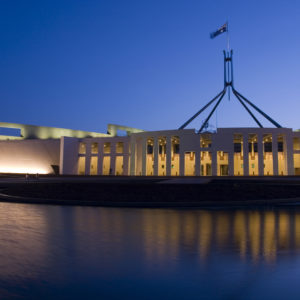2021/22 Federal Budget
This summary of the Federal Budget announcements highlights key changes for investors and advisers, particularly in superannuation, and provides commentary on the macro-economic view.
May 2021
Superannuation update
Minimum Superannuation Guarantee (SG) threshold scrapped
The Government will remove the current $450 per month minimum income threshold for compulsory minimum SG contributions, with a targeted effective date of 1 July 2022. SG contributions must be paid on all eligible income from this date. This measure is expected to increase SG contributions for around 300,000 individuals.
The minimum threshold, which was put in place, in part, to ease the paper-work burden on small business, has increasingly been in the spotlight given the digitalisation of most payroll processes, especially under Single Touch Payroll.
No change to the Superannuation Guarantee Increase Schedule
Despite comments from members of the Government following the release of the Retirement Income Review in November 2020, the 2021/22 Federal Budget did not announce any change to legislated Superannuation Guarantee (SG) increases.
The Superannuation Guarantee Rate is scheduled to increase by 0.5% of ordinary time earnings (OTE) each year over the next five years as follows:
| Period | Superannuation Guarantee Rate (% of OTE) |
| 1 July 2021 – 30 June 2022 | 10.00 |
| 1 July 2022 – 30 June 2023 | 10.50 |
| 1 July 2023 – 30 June 2024 | 11.00 |
| 1 July 2024 – 30 June 2025 | 11.50 |
| 1 July 2025 – 30 June 2026 and thereafter | 12.00 |
The Retirement Income Review provided the Government with arguments against increasing the SG Rate and the Treasurer stated last year that any decision to change the schedule of increases would be made in this Budget.
However, the Government has decided to make no changes now and to allow at least the next increase to 10% from 1 July 2021.
While the Retirement Income Review supported the view that any SG increases will result in a reduction in wages growth, we would expect the tax cuts announced in the previous budget to help cushion any actual impact, countering some of the arguments that have been made against the scheduled increases. Also, the recovery in the economy and employment has been faster than was anticipated last year.
Going ahead with the SG increases provides an opportunity to rebuild retirement savings after the impact of the COVID-19 Early Release Scheme, which has seen over 3 million members withdraw over $36 billion from the superannuation system. Although, the people who accessed super under that Scheme are not necessarily those who will benefit from the SG increases and there may be future consideration of other changes, such as the scrapping of the $450 minimum income SG threshold in this Budget, to improve equity in the superannuation system.
In our view, the superannuation system has provided an economic buffer for Australia and it’s appropriate to rebuild it, along with other nation building projects, as a part of the ongoing recovery from the COVID-19 pandemic.
Partial removal of the work test
The Government has announced the abolition of the work test on non-concessional and salary sacrifice contributions made by individuals between 67 and 74 (inclusive). The work test applied up to age 65 for income years up to 2019-2020 and was raised to 67 in the current Financial Year. The work test meant that a superannuation fund could only accept contributions for individuals employed for at least 40 hours in a 30-day period during the Financial Year, unless they met an exemption.
The work test will no longer apply and superannuation funds can accept non-concessional contributions and salary sacrifice contributions for individuals under age 75, regardless of their work status, subject to the existing contribution caps. The new rules are expected to commence 1 July 2022.
The work test will still apply to personal deductible contributions.
Removal of the work test appears to raise the possibility of individuals using an account-based pension and recontributing the minimum payments, subject to the transfer balance cap (which will be $1.7m from 1 July 2021).
Changes to superannuation and housing measures
The 2021/22 Federal Budget announced two changes relating to existing superannuation and housing measures.
The first is an extension of the Downsizer Contribution Scheme. The Scheme currently applies to individuals over 65 for amounts up to $300,000 on the sale of a primary residence that was owned for 10 or more years. The contribution is exempt from the non-concessional contributions cap and the restriction on contributions for individuals with balances over the transfer balance cap ($1.7 million from 1 July 2021).
The Scheme will be expanded and will apply to individuals over 60 rather than 65, once it commences, which is expected to be 1 July 2022.
We note that a primary residence is not assessed for age pension assets test, but superannuation balances generally are. As such, there may be age pension implications from accessing the Scheme.
The second announcement is an increase in the maximum amount of voluntary contributions that can be released under the First Home Super Saver Scheme (FHSSS) from $30,000 to $50,000. This is expected to apply from 1 July 2022.
The 2021/22 Federal Budget also makes some technical changes to applications under the FHSSS, including increasing the ATO’s discretions and allowing individuals to withdraw an application, noting there are quite specific rules that individuals wishing to access the FHSSS need to follow.
Flexibility to convert legacy retirement products
The Government has announced that it will legislate to give individuals in certain legacy retirement income products a two-year period to fully commute their benefits and transfer out of these products. This will take effect from 1 July after Royal Assent of the enabling legislation.
The products covered are market-linked, life-expectancy and lifetime annuities/pensions, which commenced prior to 20 September 2007. Lifetime pensions provided by APRA-regulated defined benefit funds or public sector defined benefit schemes are not included.
These legacy products may restrict the individuals’ access to capital and drawdowns and this measure is designed to give them greater access to their money for large expenses, such as aged care or health.
Their commuted amounts will be transferred into a superannuation fund in the accumulation phase, from where they can choose to commence a new retirement income product and/or take a lump sum benefit.
While the social security treatment that applied in the legacy product will not carry over to any new product, certain valuation methods of the legacy product continue to apply (e.g. for the transfer balance cap). The social security and taxation impacts of taking up the conversion option can be quite complex and individuals should consider seeking financial advice.
Changes to the Pension Loan Scheme
The Pension Loan Scheme (PLS) is a reverse mortgage loan arrangement, which allows eligible individuals to access equity from their home and boost their income in retirement. For individuals on the full age pension, the maximum loan amount is 50% of the age pension, while self-funded retirees can access up to 150% the age pension amount. The loan is secured against an individual’s Australian property and the payments are fortnightly.
From 1 July 2022, the Government will look to make 2 changes to the PLS:
- No negative equity guarantee – borrowers or their estate will not owe more than the market value of the secured property; and
- Eligible individuals will be able receive an advance each year of 50% of the maximum yearly age pension amount under the PLS.
Both measures seek to increase the attractiveness of the PLS which, like the reverse mortgage loan market more broadly, has had limited take-up.
Women’s Retirement Security
The removal of the minimum SG threshold is part of a broader set of measures outlined in the Women’s Budget Statement. While this Statement largely summarises the changes made in the recent past that benefit women, it does introduce some new initiatives targeting safety, health and wellbeing and economic security, which includes superannuation, housing and childcare.
The $450 minimum income SG threshold, for example, has received additional scrutiny in recent years, given it has a disproportionate impact on women’s retirement outcomes, as women make up a higher proportion of the part-time or casual workforce that may be impacted by the minimum threshold (around 63% of all those impacted).
Scrapping the minimum threshold was one the nineteen recommendations in the 2016 Senate Committee’s report “A husband is not a retirement plan” on achieving economic security for women in retirement. Interestingly, paying SG on the Commonwealth Government Paid Parental Leave Scheme, another one of the recommendations from this Report, which was expected by many to be announced in this Budget, was not.
The Government abandoned implementation of a superannuation early release scheme for domestic violence victims, which was announced in 2017 and was subject to extensive consultation.
The more recent “Retirement Income Review” (released in November 2020) has fuelled debate on the materially different outcomes for women in retirement. The Review noted that the gap in male and female superannuation balances is around 17% for full-time workers and 33% for part-time or casual workers. Total earnings and, therefore, superannuation balances, are on average lower for women, largely due to the gender wage gap (due to pay inequality and differences in roles men and women have taken) and more career breaks (generally due to maternity or carer’s leave taken).
SMSF trustee residency changes
The Government has proposed the relaxation of residency requirements, which would allow members of self-managed superannuation funds (SMSFs) and small APRA-regulated funds (SAFs) to continue to contribute, where the trustee/member is (temporarily) overseas. Subject to the legislation passing, the central control and management test safe harbour will be extended from 2 to 5 years and the active member test will be removed.
Economic update
Budget relief trumps budget repair
The Australian Government has maintained a focus on job creation in its 2021/22 Federal Budget and has become more aggressive in the unemployment rate that they are targeting. The focus of the new spending initiatives is on additional infrastructure spending, a continuation of the Low and Middle Income Tax Offset, tax relief for small business to encourage further business investment and increased funding for aged care and mental health.
While the Government has not shifted to budget repair, the stronger performance of the economy has led to a significant reduction in the FY2020/21 budget deficit ($161 billion versus $213 billion expected), with an expected step down in the deficit to $107 billion in FY2021/22. The economic recovery is expected to be robust through this year, led by household consumption and improving business investment. Australia also has a very accommodative monetary policy setting, with the Reserve Bank of Australia (RBA) keeping cash rates at record lows and undertaking purchases of Australian Government bonds in the secondary market.
Economic and fiscal outlook
Like last year’s Federal Budget, we will begin with the (still) relatively novel situation where Treasury is making forecasts on health outcomes, vaccines and the re-opening of international borders. Starting with the path of the virus, the success of the State and Federal Governments in containing outbreaks of COVID-19 means that the risks of further widespread shutdowns of economic activity have reduced – and this was reflected in the ending of the JobKeeper program. The roll-out of the vaccines has been slower than originally planned, but the Government expects that, by the end of the year, most of the population will have received the vaccine. Lastly, given the slower than expected roll-out of the vaccine, inbound and outbound international travel is expected to remain at a low level through to mid-2022.
The other forecast that we were looking for is the iron ore price that Treasury is pencilling in over the forecast period. The iron ore price is currently trading above $200 per tonne, significantly above the 2020/21 forecast that iron ore would decline to $55 per tonne by the end of the June quarter. Looking ahead, the 2021/22 Federal Budget assumes that the price will fall to $55 per tonne by the end of March 2022 – which could open up the possibility of further positive surprise in Federal Budget outcomes and the potential for further stimulus at the Federal MYEFO update (particularly given a Federal general election is due before May 2022).
The economic forecasts underpinning the 2021/22 Federal Budget have been revised higher, given the better than expected performance of the Australian economy. Real GDP is expected to come in at 1.25% in 2021 (this was -1.5% in the October 2020 Federal Budget), with a 4.25% rebound in 2021/22. The Government continues to expect that the economy will be operating below potential (i.e the output gap will be positive) through to 2024, which should limit inflationary pressures in the domestic economy.
Given the shift in fiscal strategy from the Government, the most important forecasts are those on the labour market. Treasury previously expected that the unemployment rate would remain above 6% through 2022/23. This is now down to 4.75% in 2022/23. Two of the key 21021/22 Federal Budget measures, the extension of the Low and Middle Income Tax Offset and the tax relief for small business, are expected to create 80,000 jobs. As mentioned above, the Treasurer has indicated that the Government is pursuing an unemployment rate between 4.5% and 5% before beginning to consider the need for budget repair measures.
As it currently stands, the 2021/22 Federal Budget projects that deficits will gradually decline through the rest of the decade and gross Commonwealth Government debt is expected to peak at 40.9% of GDP. This level of indebtedness remains low compared to other developed countries and is sustainable, in our opinion, given low interest rates and the long-term economic growth prospects.
Implications for asset classes and portfolios
The 2021/22 Federal Budget largely plays a background role this year – with the early cycle and re-opening dynamics of the domestic and global economy a far more important factor. At the margin though, this Budget will provide some support to certain sectors – particularly the construction and materials sectors (given the extra infrastructure spend) and some support to education providers (given the childcare subsidies). More broadly though, we expect that the continued economic recovery will continue to support the cyclical and value segments of the equity market.
We think there is little in this Budget that is of big consequence for interest rates or government bonds. The direction of global overseas interest rates and the evolution of the RBA’s monetary policy will be more important. We see the potential for longer-dated government bond yields to drift a bit higher through the year on the back of the improving economic outlook. However, this upside is likely to be limited, as we expect the RBA to continue its Quantitative Easing (QE) program through the rest of the year.
Like the outlook for government bonds, we see this Budget having limited impact on the Australian dollar. While commodity prices remain supportive, the Australian dollar has become a de facto policy target of the RBA and the RBA has been active in trying to contain interest rate differentials through its QE program and thus try and reduce further appreciation in the Australian dollar.





